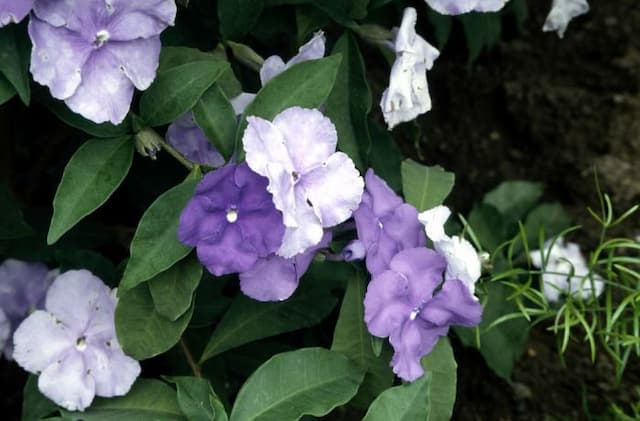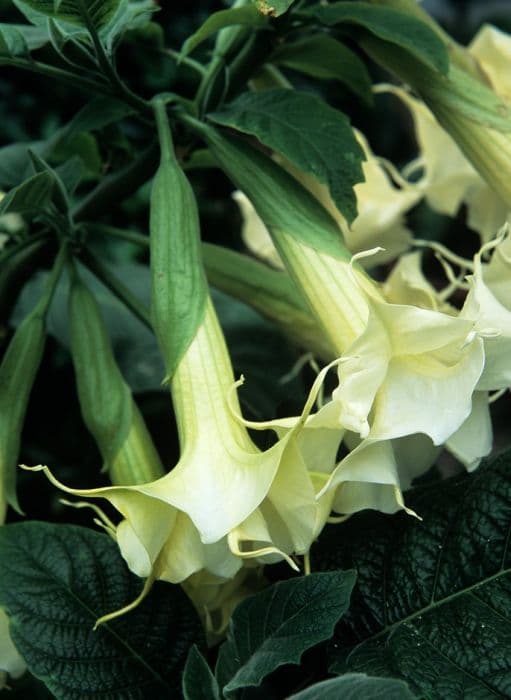Chilli pepper 'Hungarian Hot Wax' Capsicum annuum 'Hungarian Hot Wax'



ABOUT
Chilli pepper 'Hungarian Hot Wax' is a bushy annual about 2 feet tall. This variety was bred in Hungary, as the name suggests. Early maturing. The plant is low-growing, does not require garter.
The leaves are lanceolate and the flowers are white. Flowering is followed by conical fruits up to 4 inches long that are orange to red, producing medium to high spice chili peppers.
The fruits of the peppers are edible, medium spicy. It is a mid-hot pepper rating of 2,500 to 8,000 on the scoville scale.
The skin of these peppers is waxy and crispy, but edible. They have a thick flesh. The sweetish-spicy flavor of these peppers is very popular in sauces and other dishes, soups, and salads.
They can be found pickled or fresh in stores or markets.
About this plant
 Names
NamesFamily
Solanaceae
Synonyms
Chilli pepper, Hungarian wax, Hot yellow pepper, Hot wax pepper
Common names
Capsicum abyssinicum, Capsicum angulosum, Capsicum axi, Capsicum bauhinii, Capsicum caerulescens, Capsicum cerasiforme, Capsicum ceratocarpum, Capsicum cereolum, Capsicum comarim, Capsicum conicum, Capsicum conoide, Capsicum conoides, Capsicum conoideum, Capsicum cordiforme, Capsicum crispum., Capsicum cydoniforme, Capsicum dulce, Capsicum fasciculatum, Capsicum fastigiatum, Capsicum frutescens, Capsicum globiferum, Capsicum globosum, Capsicum grossum, Capsicum indicum, Capsicum longum, Capsicum milleri, Capsicum minimum, Capsicum odoratum, Capsicum odoriferum, Capsicum oliviforme, Capsicum ovatum, Capsicum petenense, Capsicum pomiferum, Capsicum purpureum, Capsicum pyramidale, Capsicum quitense, Capsicum silvestre, Capsicum sphaerium, Capsicum tetragonum, Capsicum tomatiforme, Capsicum torulosum, Capsicum tournefortii, Capsicum ustulatum
 Toxicity
ToxicityTo humans
The fruits of 'Hungarian Hot Wax' are eadible, but the leaves are toxic to humans.
To pets
The plant contains solanine, which is a toxin that can cause gastrointestinal upset and central nervous system damage if ingested by an animal.
 Characteristics
CharacteristicsLife cycle
Annuals
Foliage type
Deciduous
Color of leaves
Green
Flower color
White
Height
2 feet
Spread
1,5 feet
Plant type
Shrub
Hardiness zones
9
Native area
The variety was bred in Hungary
Benefits
 General Benefits
General BenefitsChili peppers are rich in various vitamins and minerals;
Chili peppers are rich in antioxidant plant compounds that are associated with various health benefits. Most notable is capsaicin, which is responsible for the spicy taste of chili peppers;
It is a pain reliever thanks to capsaicin, the main bioactive plant compound in chili peppers;
It can help you lose weight: some evidence suggests that capsaicin can promote weight loss by reducing appetite and increasing fat burning;
Very ornamental plant and can be grown as a decorative potted plant indoors;
Chilli pepper 'Hungarian Hot Wax' won the RHS Award of Garden Merit. Medical Properties
Medical PropertiesMedicine uses a substance called capsaicin, which is responsible for the spicy taste of chili peppers. Thanks to capsaicin, the main bioactive plant compound in chili peppers, it relieves pain.
In addition, chili peppers have preventive and therapeutic properties for many ailments such as various types of rheumatism, joint stiffness, bronchitis, colds and arthritis.
Note that it is not used as a stand-alone remedy.
Do not use without consulting a specialist! Other Uses
Other UsesChili peppers are mainly used as a condiment. It can be dried and ground into a powder;
Capsaicin is the main biologically active plant compound in chili peppers, responsible for its unique, pungent flavor and has warming and analgesic effects.
Interesting Facts
 Plant Symbolism
Plant SymbolismIn southern Italy, chili peppers are considered a "demonic spice". However, some locals use it for personal protection or to protect the car or home from the evil eye and gossipers.
 Water
WaterAt different stages of growth, it needs different amounts of water.
Plants need moderate but regular watering. Neither drying out nor overwatering the soil is acceptable.
At the peak of flowering, try to keep the water level in the soil at 70%.
At fruit ripening, the water level in the soil should be reduced to about 60%.
If possible, water in the morning so that the plant has enough time to absorb water before the sun goes down and the excess water has time to evaporate.
Note that the plant does not like excessive moisture. Light
LightChili peppers grow well in full sun.
They will also grow in partial shade, but will not be as productive. Temperature
TemperatureA favorable temperature for plant growth is 68 to 77 °F during the day and 59 to 62 °F at night.
 Pruning
PruningTake care to remove old leaves and weak side leaves. In this way, you will improve air circulation and light permeability and increase photosynthesis. In addition, pruning promotes a rational distribution of nutrients and ensures the nutritional needs of the fruit.
 Soil
SoilPeppers grow best in fertile, well-drained soil. Loamy soils with high organic matter content are best for the crop because the soil warms up quickly and drains well.
 Humidity & Misting
Humidity & MistingThe best relative humidity ranges between 50% and 70%.
If the humidity is higher, disease will develop in the parts that are exposed to the air, which in turn will make fertilization more difficult. Suitable locations
Suitable locationsIndoor
Spring, summer, fall.
Since it is an annual plant, it dies by winter.Outdoor
Summer.
A heat-loving plant, so it is planted outdoors if the temperature at night is not below 59 °F.
It is possible to grow in greenhouses under the right temperature and light conditions.Hardiness zone
10 - 12 USDA
 Life cycle
Life cycleA fast-growing plant and 70-80 days to mature!
The maximum fruiting period is 120 days.
After fruiting, the plant will die back. Propogation
PropogationPropogation time
Spring
Peppers are annuals, so they are propagated by seeds every spring.
Seeds are planted, most often in March and covered with glass or polyethylene to create a greenhouse effect.
When the first 4 true leaves appear, they are transplanted into a separate small container of suitable size.
Further transplanted as the plant and root system grows.
 Pests
PestsSpider mite, Mealybug, Aphid, Colorado potato beetle
 Diseases
DiseasesBotrytis cinerea, Phytophthora infestans, Avocado sunblotch viroid






![Calibrachoa [Callie Mango]](/_next/image?url=https%3A%2F%2Fplants-admin.emdemapps.com%2Fimages%2Fplants%2F%2Fimages%2F604b6514b1579.png&w=640&q=75)


